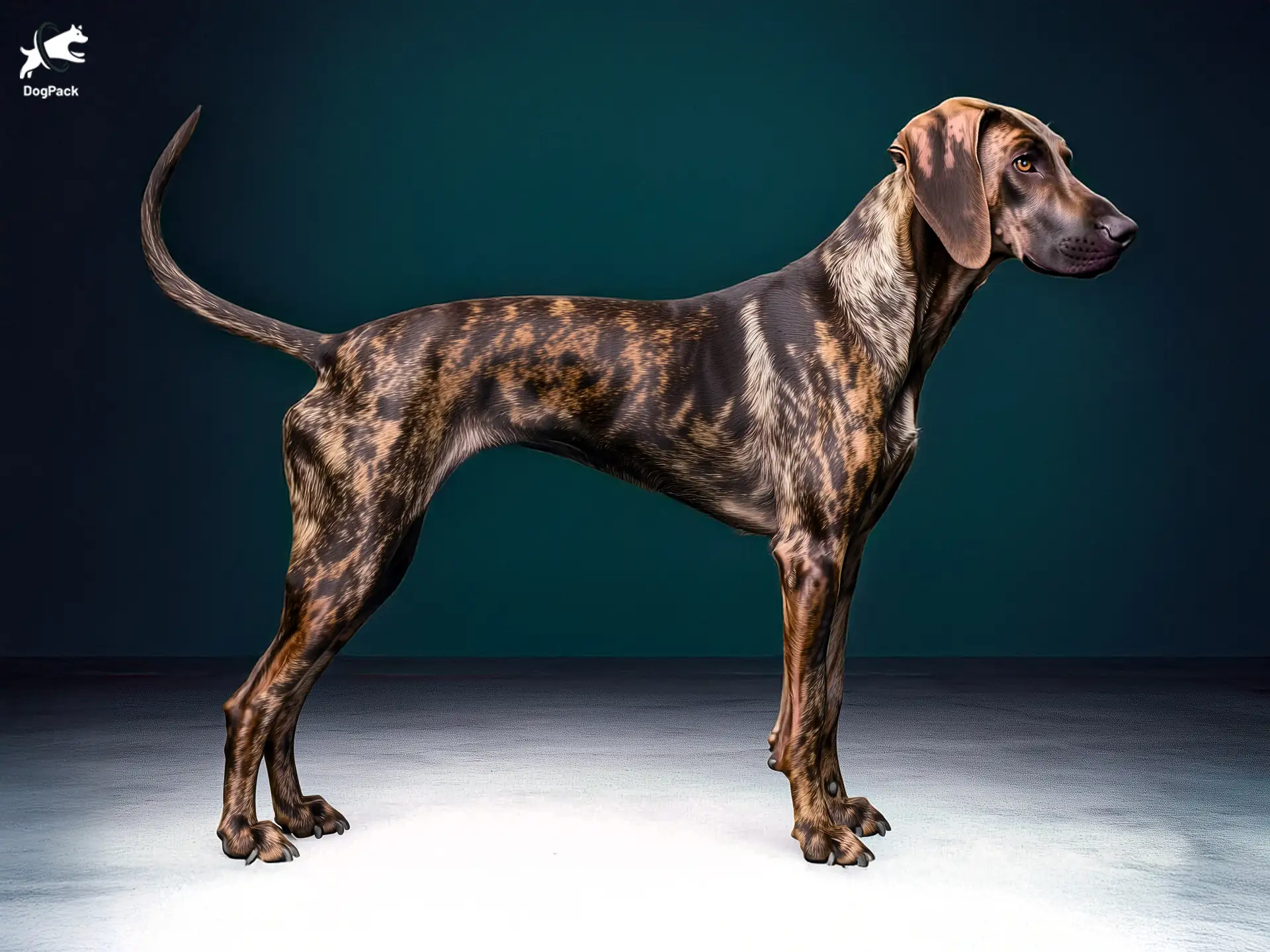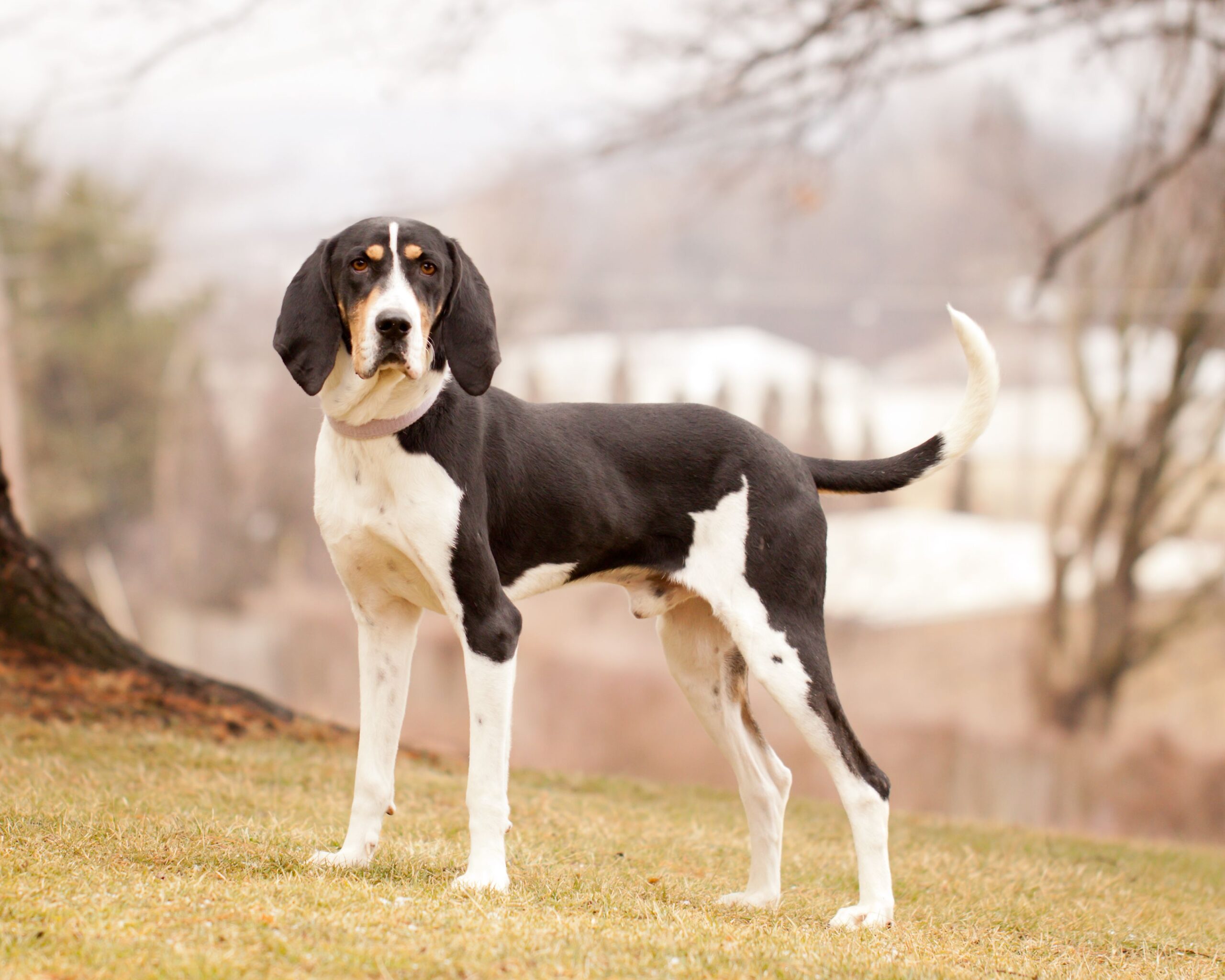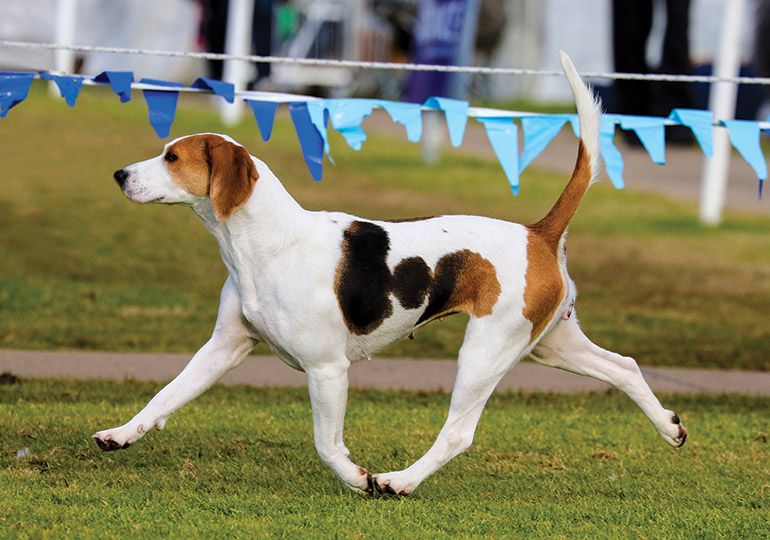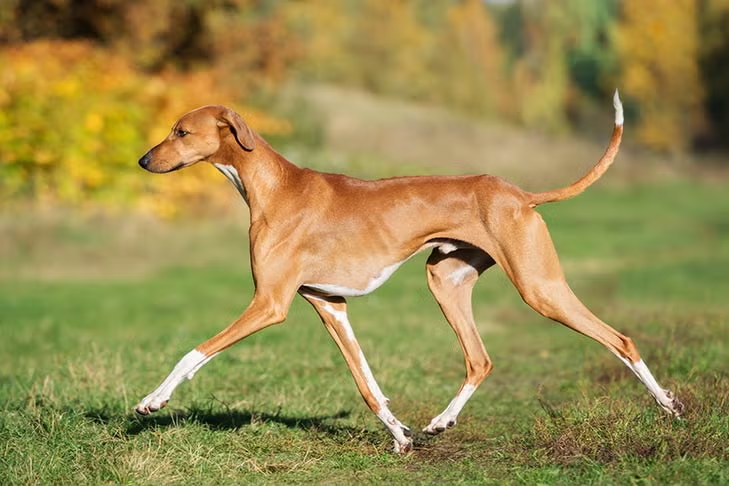My First Encounter with the Magnificent Plott Hound
I’ll never forget my first meeting with a Plott Hound. I was hiking in the Blue Ridge Mountains of North Carolina when I encountered a local hunter with his two striking brindle dogs. Their muscular build, smooth coats with that distinctive tiger-striped brindle pattern, and alert, intelligent expressions immediately caught my attention. The owner beamed with pride as he explained these weren’t just any hunting dogs—they were Plott Hounds, North Carolina’s official state dog and one of America’s rarest and most tenacious hunting breeds. As I watched them navigate the rugged terrain with incredible agility and confidence, I was completely captivated by these remarkable dogs that somehow remain unknown to most dog lovers outside hunting circles.
If you’ve never heard of Plott Hounds, you’re definitely not alone. Despite being one of the most capable hunting dogs in America with a fascinating history dating back to 18th-century German immigrants, they remain something of a well-kept secret. Yet with their striking appearance, legendary determination, and surprisingly affectionate family nature, these dogs deserve far more recognition than they typically receive.
Whether you’re considering adding one of these bold mountain hounds to your family, are curious about their impressive hunting abilities, or just love learning about unique American dog breeds, I’ve put together the ultimate guide to Plott Hounds. From their fascinating development in the Appalachian Mountains to what they’re actually like as family companions (spoiler alert: they’re incredible for the right active homes), we’ll cover everything you need to know about these tenacious, loyal dogs. So grab your favorite beverage, get comfy, and let’s dive into the wonderful world of Plott Hounds!
American Heritage: The Fascinating History of the Plott Hound
To truly understand what makes Plott Hounds so special, we need to appreciate their unique history, which differs from many other American hound breeds and explains so much about their distinctive traits and abilities.
From Germany to the Appalachian Mountains
Unlike most American hound breeds that descended from English foxhounds, the Plott Hound’s story begins in Germany. In 1750, Johannes Georg Plott emigrated from Germany to the United States, bringing with him a pack of “Hanoverian Schweisshunden”—German hunting dogs used for tracking wild boar and other big game. These dogs were the foundation of what would become the Plott Hound breed.
Johannes settled in the mountains of western North Carolina, where his son Henry continued developing the family’s hunting dogs. The rugged Appalachian terrain and abundant large game like bear and wild boar provided the perfect environment for honing the dogs’ tracking and treeing abilities. Unlike many hound breeds bred for following foxes or raccoons, Plotts were specifically developed for tackling dangerous big game, requiring exceptional courage, strength, and tenacity.
For over 200 years, the Plott family selectively bred their hounds based on hunting performance rather than appearance, creating dogs perfectly adapted to the challenging mountain environment and the demands of hunting large, potentially dangerous game. The breed remained largely within the Plott family and their neighbors, developing in relative isolation in the Appalachian Mountains.
It wasn’t until the early 1900s that the breed began gaining recognition outside the region when G.P. Ferguson, a neighbor of the Plotts, acquired some of the dogs and began promoting them. The Plott Hound was recognized by the United Kennel Club in 1946, but the American Kennel Club didn’t officially recognize the breed until 2006—a testament to how this working breed’s value was measured by performance in the field rather than in the show ring.
North Carolina’s State Dog and American Original
In 1989, the Plott Hound was named the official state dog of North Carolina, honoring both the breed’s development in the state and its importance to the cultural heritage of the Appalachian Mountains. This recognition highlighted the Plott’s status as one of the few truly American dog breeds and the only one that doesn’t trace its ancestry back to English hounds.
Today, while Plott Hounds continue their traditional role as hunting companions for bear, boar, and other large game, they’re also gaining appreciation as family pets for active households. Organizations like the National Plott Hound Association work to preserve the breed’s working abilities while promoting responsible ownership and breeding practices.
The Plott Hound’s history reflects a distinctly American story of immigration, frontier life, and the close partnership between humans and dogs working together in challenging environments. Their development prioritized functional traits like stamina, courage, and hunting ability over standardized appearance, creating a breed known more for what it can do than how it looks—though their distinctive brindle coats have become a hallmark of the breed.
The Plott Hound Look: Athletic and Functional
Plott Hounds embody the principle that form follows function—every aspect of their appearance directly relates to their historical purpose as big game hunting dogs in rugged mountain terrain. Let’s explore their physical characteristics and what makes them both distinctive and supremely adapted to their working role.
Size, Build, and Overall Appearance
Plott Hounds are medium to large dogs with a powerful, muscular build that combines strength with agility. Males typically stand 20-25 inches at the shoulder and weigh between 50-60 pounds, while females are slightly smaller at 20-23 inches and 40-55 pounds.
Their overall appearance conveys power, endurance, and athleticism. These are working dogs built to track and sometimes directly confront dangerous game like bear and wild boar, and their physical structure reflects this purpose. Key physical features include:
- A moderately broad head with a slightly domed skull
- A strong muzzle of medium length with a squarish appearance
- Expressive eyes, typically dark brown with an alert, confident expression
- Moderately long ears that hang gracefully and are set high on the head
- A deep chest providing ample lung capacity for stamina
- Strong, well-muscled shoulders and hindquarters built for both speed and power
- A straight, muscular back leading to strong loins
- A long tail carried high when alert, often with a slight curve
Their movement is smooth and effortless, with a ground-covering stride that speaks to their endurance. Plott Hounds can navigate difficult terrain for hours without tiring, a necessary trait for hunters who might track game across mountains and valleys for an entire day or even multiple days.
That Distinctive Brindle Coat
The most immediately recognizable feature of many Plott Hounds is their brindle coat pattern. The classic Plott coat is a striking brindle—dark stripes over a lighter background, giving them a tiger-striped appearance. The brindle may be any shade from light tan to deep, rich chocolates and reds, often with a dark mask on the face.
While brindle is the most common and distinctive coloration, Plotts can also be found in solid black, any shade of brindle, bucksin, or black with brindle trim. Some have small white markings on the chest and feet, though excessive white is considered undesirable in the breed standard.
Their coat is short to medium in length, smooth, and fine with a glossy appearance when healthy. This practical coat protects them from briars and brush while hunting without collecting burrs or trapping excessive heat during intense activity. Their coat sheds moderately but is relatively low-maintenance, typically requiring just weekly brushing to remove loose hair and distribute skin oils.
Unlike some hound breeds, Plotts don’t typically have a strong “hound odor,” which can make them somewhat easier to maintain as house dogs. Occasional baths when they’re dirty are usually sufficient to keep them clean.
Personality & Temperament: The Heart of the Plott Hound
Beyond their athletic appearance and hunting prowess, what’s it actually like to live with a Plott Hound? Their personalities combine remarkable determination and courage with surprising sensitivity and family devotion.
The Plott Personality: Loyal, Tenacious, and Intelligent
If I had to sum up the Plott Hound personality in three words, they would be: tenacious, loyal, and intelligent. These dogs bring together an incredible work ethic with a deeply devoted nature that makes them special companions for the right homes.
Tenacity is perhaps their most defining trait. Plott Hounds were bred to track and tree dangerous game like bear and wild boar, tasks that require extraordinary determination and courage. This single-mindedness served them well as hunters and carries over into everything they do. When a Plott sets their mind to something, their persistence can be astonishing. This trait can be both impressive and challenging for owners, as it can manifest as stubbornness when their goals don’t align with yours.
Loyalty runs deep in Plott Hounds. Unlike some hound breeds that maintain a certain independence, Plotts typically form strong bonds with their families and are genuinely devoted to their people. Many become protective of their family members, though not typically aggressive without cause. Their loyalty extends to their work as well—a Plott on a track will not give up easily, continuing to pursue their quarry across difficult terrain and through challenging conditions.
Intelligence in Plott Hounds manifests as problem-solving ability and adaptability rather than blind obedience. These dogs needed to make independent decisions while hunting, often at a distance from their handlers. This created a dog that can think for itself and assess situations, which can translate to impressive learning ability when properly motivated. They’re quick to figure out puzzles, especially if there’s a reward involved, but may question why they should perform tasks that don’t make sense to them.
Family Life: More Adaptable Than You Might Expect
Many people assume that such serious hunting dogs wouldn’t adapt well to family life, but Plott Hounds can actually make wonderful family companions for the right households. With their people, they often show a surprisingly gentle and affectionate side that contrasts with their bold hunting persona.
Most Plotts are good with children when raised with them, particularly older kids who understand how to respect dogs. Their protective nature often extends to the children in their family, and many form special bonds with “their” kids. However, their size and energy level means supervision is important with very small children.
With other dogs, Plotts can do well when properly socialized, especially if raised together. Their pack hunting background means they generally understand canine social cues and can get along with other dogs. However, some Plotts may show dominance or same-sex aggression, particularly intact males. Their high prey drive means they may not be suitable for households with cats or small pets unless extensively socialized from puppyhood.
One aspect of Plott personality that sometimes surprises owners is their sensitivity. Despite their tough exterior and hunting courage, many Plotts are quite responsive to their owner’s emotions and can be hurt by harsh treatment. They tend to respond best to confident, consistent handling that respects their intelligence and working heritage.
The Voice: Distinctive and Purposeful
Like all hounds, Plott Hounds are vocal dogs with a distinctive voice that served a crucial purpose in their hunting work. Their bay allowed hunters to follow their progress from a distance, particularly in dense forest or mountainous terrain where visual contact wasn’t possible.
A Plott’s voice is often described as loud, clear, and distinctive, with a chop-mouthed bawl when on a hot track and a different, more prolonged cry when they’ve treed their quarry. Experienced hunters can often identify individual dogs by their voices and can tell the progress of the hunt by the sounds their dogs make.
This vocal nature can be challenging in suburban environments and is one reason Plotts are often better suited to rural or semi-rural living. Training can help manage excessive vocalization in non-hunting situations, but it’s important to understand that some baying is simply part of who they are.
The Hunting Instinct: Understanding Their Working Heritage
The Plott Hound’s most remarkable feature isn’t their brindle coat or athletic build—it’s their extraordinary hunting ability and courage. Let’s explore what makes their working style so special and how it impacts life with these dogs.
The Plott’s Hunting Style: Courage and Persistence
What sets Plott Hounds apart from many other scent hounds is the type of game they were developed to hunt. While many American hounds were bred to track and tree raccoons or to chase foxes, Plotts were specifically developed for larger, more dangerous game like bear and wild boar.
This specialization required not just scenting ability, but exceptional courage and physical power. Plotts were expected to not only track and tree bears but sometimes to engage directly with wild boar, which can be extremely dangerous. This created a more confrontational hunting style than many other hound breeds, with Plotts willing to closely engage with their quarry rather than simply tracking and baying.
Their hunting style typically involves picking up the scent, tracking persistently over whatever terrain necessary, and then either treeing the quarry (in the case of bears) or cornering and holding it at bay (in the case of boar) until hunters arrive. Throughout this process, they communicate through their distinctive voices, allowing hunters to follow their progress.
This combination of scenting ability, physical prowess, and sheer determination made Plotts renowned among big game hunters, especially in the Appalachian region where they were developed. Today, while many continue to hunt traditional game, others have proven adaptive to different hunting scenarios or competitive tracking events.
Living with the Hunting Instinct
For pet owners, the Plott’s hunting heritage translates to several important considerations:
- High prey drive: Plotts will typically chase small animals, making secure fencing essential and off-leash reliability challenging.
- Need for physical and mental stimulation: Without appropriate outlets, their hunting energy can manifest as destructive behavior or excessive vocalization.
- Strong tracking instinct: Walks may become “tracking expeditions” as they follow interesting scents.
- Independent thinking: They may make their own decisions rather than always looking to their owner for direction.
Channeling these instincts constructively is key to success with a Plott Hound. Activities like tracking sports, nosework, hiking, or swimming can provide appropriate outlets for their energy and natural abilities. Many Plott owners find that engaging their dog’s mind through scent-based activities results in a calmer, more content companion at home.
It’s worth noting that while their hunting instincts are strong, most Plotts can distinguish between “work” and family life. Many are surprisingly gentle and calm in the home environment once their exercise needs are met, capable of transitioning from determined hunter to contented companion.
Health and Longevity: A Generally Hardy Breed
One advantage of purpose-bred working dogs like the Plott Hound is their generally good health. As a breed developed for function rather than appearance, they’ve maintained a practical body structure and avoided many of the health problems that plague some more popular breeds.
Common Health Considerations
While generally robust dogs with fewer health problems than many breeds, Plott Hounds can be prone to certain conditions:
- Hip Dysplasia: This developmental condition affects the hip joint and can lead to arthritis and mobility issues.
- Ear Infections: Their hanging ears can be prone to infections if not kept clean and dry.
- Gastric Dilatation-Volvulus (Bloat): Like many deep-chested breeds, they can be susceptible to this life-threatening condition.
- Hypothyroidism: An underactive thyroid that can affect metabolism and overall health.
- Eye Issues: Various eye conditions can occasionally occur in the breed.
Working with a reputable breeder who conducts health testing on their breeding stock can reduce the risk of inherited conditions. Regular veterinary check-ups are essential for catching and addressing health issues early.
Lifespan and Aging Considerations
The average lifespan of a Plott Hound is about 12-14 years, which is good for a medium to large breed. Many remain active and energetic well into their senior years, though their exercise needs may decrease somewhat as they age.
As they get older, Plotts may develop arthritis, particularly if they’ve been very active throughout their lives. Weight management becomes even more critical for older dogs to reduce strain on their joints. Many owners find that joint supplements (given under veterinary guidance) help maintain mobility as their Plotts age.
Senior Plotts often maintain their loyal, affectionate temperament while becoming somewhat less driven to follow every interesting scent, often making them more manageable as house pets in their golden years.
Training and Exercise: Meeting Their Needs
Training a Plott Hound requires understanding their unique mindset and providing adequate physical and mental stimulation. Let’s explore effective approaches to bringing out the best in these energetic, determined dogs.
Exercise Requirements: The Key to a Balanced Plott
Perhaps the most important thing to understand about Plott Hounds is their substantial need for exercise. These dogs were bred for endurance hunting in mountainous terrain, often covering many miles in a day’s hunt. Without adequate physical outlets, they can become destructive, excessively vocal, and difficult to manage.
A minimum of 1-2 hours of vigorous exercise daily is appropriate for most adult Plotts. This should include activities that allow them to run and burn energy, not just leash walking. Suitable exercises include:
- Hiking on trails
- Running in a securely fenced area
- Swimming (many Plotts enjoy water activities)
- Scent-based games that engage their tracking abilities
- Structured activities like tracking sports, nosework, or even weight pulling
In addition to physical exercise, mental stimulation is equally important. Plotts are intelligent dogs that need mental challenges as well as physical ones. Puzzle toys, training sessions, and especially scent work can help keep their minds engaged and prevent boredom.
It’s worth noting that a securely fenced area is essential for Plott Hounds. Their strong prey drive and tracking instinct mean they may take off after interesting scents with little regard for boundaries or recall commands. A minimum 6-foot fence is recommended, as they can be surprisingly good climbers and jumpers when motivated.
Training Approaches: Working With Their Nature
Training a Plott Hound requires patience, consistency, and an understanding of their working heritage. Here are some strategies that work particularly well:
- Start early: Begin training and socialization when they’re puppies and more receptive to new experiences.
- Use positive reinforcement: Plotts respond much better to rewards than corrections. Find what motivates your individual dog – food rewards work for many, but some may respond better to play or praise.
- Keep sessions short and engaging: These dogs can become bored with repetitive training. 5-10 minute sessions several times a day are more effective than one long session.
- Be consistent and confident: Plotts respect clear leadership and consistent rules. Wishy-washy handling can lead to them making their own decisions.
- Exercise before training: A tired Plott is more likely to focus on training than one with pent-up energy.
- Use their nose: Incorporating scent work into training can increase their engagement and motivation.
It’s important to understand that Plott Hounds were bred to work somewhat independently, making decisions on their own while hunting. This created a dog that thinks for itself and may question commands that don’t make sense to them. Many new owners mistake this independent thinking for stubbornness or disobedience, when in fact it’s simply part of their working heritage.
Special Training Challenges
Two aspects of training deserve special attention with Plott Hounds: recall and their strong prey drive.
Reliable recall (coming when called) is perhaps the biggest training challenge with this breed. Once they catch an interesting scent, their hunting instincts can override their response to commands. For safety, most experienced Plott owners never allow their dogs off-leash in unsecured areas, regardless of how well-trained they seem. For those determined to improve recall, long-line training and high-value rewards can help, but expectations should remain realistic.
Managing their prey drive requires early socialization and consistent training. While their instinct to chase small animals cannot be eliminated entirely, most Plotts can learn to distinguish between appropriate hunting situations and inappropriate ones with proper guidance. Early positive experiences with other animals, especially when supervised and rewarded for calm behavior, can help mitigate prey drive issues in family settings.
Is a Plott Hound Right for You? Honest Assessment
After learning all about these remarkable dogs, you might be wondering if a Plott Hound would fit well in your lifestyle. Let’s take an honest look at who should (and perhaps shouldn’t) consider this breed.
You Might Be a Great Plott Owner If…
A Plott Hound might be right for you if:
- You lead an active, outdoor lifestyle and enjoy activities like hiking, running, or swimming
- You have a securely fenced yard or reliable access to safe exercise areas
- You live in a rural or semi-rural area where their vocalizations won’t disturb neighbors
- You have experience with independent-minded dogs and enjoy the challenge of working with a dog that thinks for itself
- You appreciate their hunting heritage and natural instincts
- You’re looking for a loyal, courageous companion that will form strong bonds with family members
- You’re interested in dog sports like tracking, nosework, or even hunting
- You’re willing to commit to their substantial exercise needs for 12+ years
Plotts can adapt well to family life and generally do well with children, especially when raised with them. They often form strong protective bonds with “their” kids, though supervision is always important due to their size and energy level.
A Different Breed Might Be Better If…
A Plott Hound might not be the best choice if:
- You have a sedentary lifestyle or limited time for exercise
- You live in an apartment or area with strict noise ordinances
- You want a dog that’s easy to train with high reliability off-leash
- You have small pets like cats, rabbits, or guinea pigs (unless you’re very experienced with managing strong prey drive)
- You’re away from home for long periods regularly
- You prefer a dog that focuses primarily on you rather than environmental stimuli
- You’re looking for a laid-back, low-energy companion
- You’re a first-time dog owner (Plotts are wonderful but can be challenging for novices)
Finding Your Plott
If you decide a Plott Hound is right for you, consider both rescue and reputable breeders:
Several Plott-specific rescues exist, particularly in the southeastern United States where the breed is more common. Many traditional coonhound and hound rescues also occasionally have Plotts or Plott mixes. Adoption typically costs $100-$300 and often includes initial veterinary care.
If purchasing from a breeder, research extensively to find one who prioritizes health and temperament over appearance alone. Reputable breeders conduct health testing on breeding stock, provide proper socialization for puppies, and offer lifetime support to puppy buyers. Expect to pay $500-$1,200 for a well-bred Plott Hound puppy.
The American Plott Association and the National Plott Hound Association can be good resources for finding reputable breeders or rescue organizations.
Conclusion: America’s Bold Mountain Treasures
There’s something truly special about Plott Hounds. From their unique German origins to their development in the Appalachian Mountains, from their striking brindle coats to their legendary courage and determination, these dogs represent an important piece of American heritage while offering loyal companionship to those who understand and appreciate them.
Living with a Plott Hound certainly comes with unique challenges – their substantial exercise requirements, independent nature, and strong hunting instincts require commitment and understanding from their owners. But for active people who appreciate them for exactly who they are, these challenges are far outweighed by the joy of sharing life with such a courageous, capable, and devoted companion.
Whether they’re bounding tirelessly alongside you on a mountain trail or curled up contentedly by your side after a day of adventures, Plott Hounds bring a special energy and depth to the lives of those lucky enough to know them. They connect us to America’s rugged frontier spirit while forming deep, loyal bonds with their chosen families.
If you decide to welcome one of these remarkable dogs into your home, prepare for an adventure filled with determination, loyalty, and the rewards of partnering with a dog bred for generations to work alongside humans with courage and heart. It’s a unique journey – and for the right person, an incredibly rewarding one.




